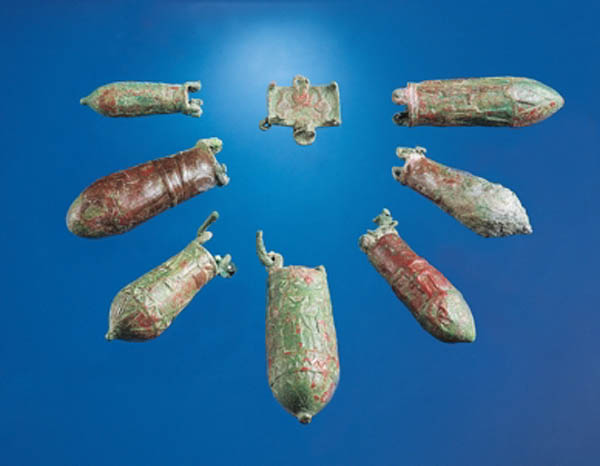Image Details

Ilan Sztulman/Leon Levy Expedition to Ashkelon
VIRILE VESSELS. At the coastal site of Ashkelon, one of the five cities of the Philistine pentapolis, several bronze phallus-shaped situlae were unearthed in a cultic area dating to the late seventh century B.C.E. The vessels were decorated with depictions of the well-endowed Egyptian god Min, a fertility deity closely associated with male sexual potency (seen with an erect phallus on the situla ). Ashkelon excavator Lawrence Stager suggests that the situlae—likely intended as votive offerings to Philistine gods—were filled with semen, milk or water, all symbols of male virility and life-giving power.
Phallic imagery is rarely found in the religious iconography of ancient Israel and Canaan. It was common, however, in Philistia, the Aegean and Egypt. The Philistines originated in the Aegean, arriving in Canaan, perhaps via Egypt, at the end of the Late Bronze Age.
